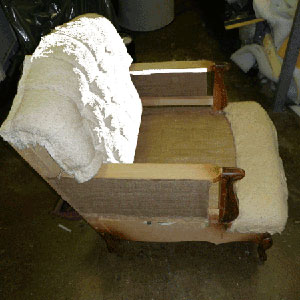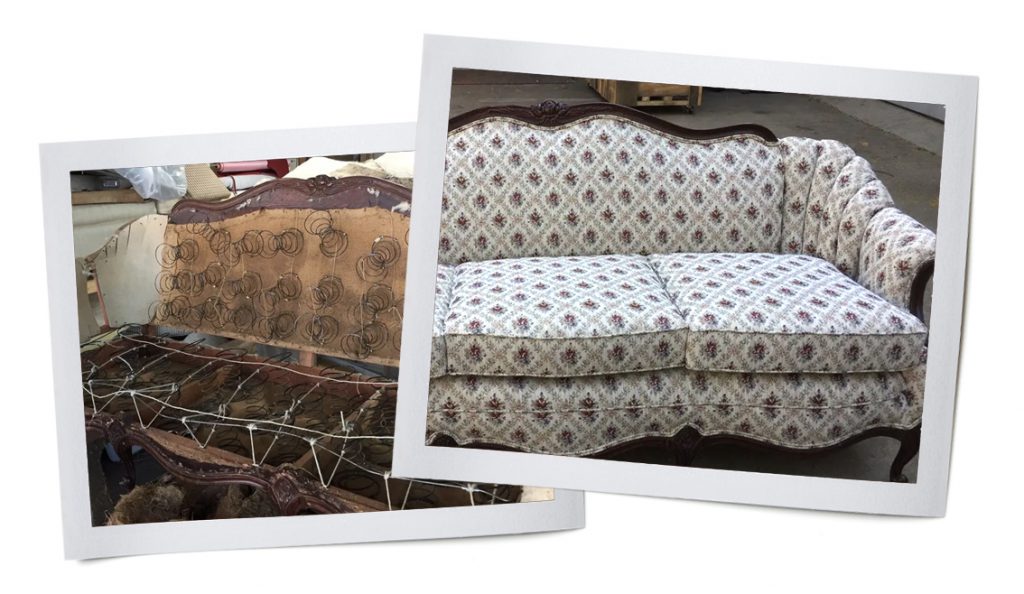The Ultimate Guide to Furniture Repair Service Techniques
In the world of furniture maintenance, the art of furniture fixing is an ability that can rejuvenate worn-out items and maintain treasured belongings. As we browse the globe of upholstery repair techniques, we encounter a myriad of approaches that can change a worn out couch or chair into a revitalized centerpiece of a room. From assessing the damages to thoroughly repairing tears and holes, each action in the process holds the essential to restoring furniture to its previous magnificence. Stay tuned as we untangle the ins and outs of this craft and reveal the secrets to understanding furniture repair techniques that will certainly elevate your furniture repair endeavors.
Assessing Upholstery Damage
When evaluating upholstery damages, it is essential to carry out a thorough assessment to accurately establish the extent of the problems existing. Begin by aesthetically checking the furniture for any type of noticeable tears, slits, discolorations, or discoloration.
Next, examine the hidden framework of the furniture to look for any damage to the framework, springs, or cushioning. Sometimes, the damage may not be quickly noticeable on the surface but can dramatically influence the general stability of the upholstery. By thoroughly examining both the external furniture and interior components, you can guarantee that all issues are identified and suitably attended to during the repair work process.
Additionally, take into consideration the kind of furniture product used as different fabrics and leathers might need particular repair methods. upholstery repair. Understanding the product residential properties will certainly assist in picking the most ideal repair techniques and products to accomplish optimum results
Essential Tools and Materials
To properly perform furniture repairs, having the ideal devices and materials is vital for accomplishing specialist outcomes. Necessary devices for upholstery fixing include a staple gun for protecting textile, upholstery needles and string for stitching, scissors for reducing textile, a rubber mallet for touching in furniture components, and pliers for getting rid of old staples and nails. Additionally, having a fabric marker for describing patterns, a joint ripper for ruin joints, and a warm glue gun for fast repairs can be valuable. Products such as upholstery textile, foam batting, extra padding, and webbing are vital for changing damaged components. It is likewise vital to have a variety of upholstery tacks, nails, and staples accessible for protecting fabric and trim. Adhesives like fabric glue or spray adhesive are useful for specific repair work. By guaranteeing you have the required devices and materials before starting a furniture repair service project, you can function efficiently and successfully to recover furniture to its former glory.
Preparing the Furniture Surface
Prep work of the furniture surface area is a crucial first action in ensuring the effective outcome of any kind of furniture repair work task. Before starting any repair service job, it is necessary to thoroughly clean up the furniture surface to eliminate dust, dirt, and any kind of various other particles that might hinder the adhesion of new products. This can be done using a vacuum, a soft brush, or a moist towel, depending upon the kind of furnishings and the degree of dust existing.
When the surface is clean, any kind of broken or loose furniture material, cushioning, or springs need to be meticulously eliminated. This step is essential to guarantee that the new products adhere safely which the fixed upholstery preserves a expert and smooth look. In addition, any old staples or tacks must be drawn out, and the surface area should be evaluated for any architectural damage that might require to be resolved prior to proceeding with the fixing.

Fixing Holes and splits
After guaranteeing the furnishings surface is free of dust, dirt, and debris and getting rid of any kind of loose or broken furniture materials, the next step in furniture repair includes addressing tears and openings in the material. Fixing splits and holes in furniture can aid prolong the life of your furnishings and restore its visual charm. One common approach for fixing tiny rips and holes is by making use of a needle and string to sew the sides of the damaged area back with each other. For bigger holes or tears, a patch of textile can be made use of to view website cover and enhance the broken area (upholstery repair). Textile glue or adhesive can additionally be used to protect the spot in position. It is essential to meticulously match the color and structure of the patch fabric to the original furniture for a seamless repair. Once the tear or opening is repaired, ensure that the location is properly cleaned and dried out prior to making use of the furnishings once again to stop any kind of further damage.
Removing Stains and Smells
Resolving stubborn spots and sticking around odors in upholstery needs a targeted and thorough method to make certain effective reconstruction of the material's appearance and freshness. Discolorations can be created by different materials such as food spills, family pet accidents, or beverage accidents, while smells commonly originate from smoke, pet dander, or spills passing through the furniture fibers. To take on discolorations, it is necessary to determine the kind of tarnish initial to use the proper cleaning service. For water-based spots, blotting with a mix of light detergent and water can be reliable, while oil-based discolorations might call for a solvent-based cleanser. Smells, on the other hand, require a deeper cleansing process that entails neutralizing the resource of the smell instead of masking it. Utilizing sodium bicarbonate or specialized furniture deodorizers over at this website can assist get rid of odors effectively. In many cases, expert cleansing services might be needed for severe stains and odors that continue despite home treatments. Regular upkeep and prompt attention to spills can assist in avoiding deep-rooted discolorations and smells, protecting the upholstery's problem.

Verdict
In final thought, grasping upholstery fixing strategies calls for cautious evaluation of damage, the use of vital tools and materials, appropriate preparation of the furniture surface, and the skilled repair of splits, odors, spots, and openings. By following these actions, individuals can properly extend the life and bring back of their furnishings.

Important tools for furniture fixing consist of a staple weapon for securing fabric, upholstery Clicking Here needles and thread for sewing, scissors for cutting textile, a rubber club for touching in furnishings components, and pliers for getting rid of old staples and nails. By guaranteeing you have the needed devices and materials before starting a furniture repair work project, you can function efficiently and efficiently to bring back furniture to its former splendor.
Preparation of the furniture surface area is a critical initial step in making sure the successful end result of any furniture fixing job.After guaranteeing the furniture surface area is free of debris, dirt, and dust and getting rid of any kind of loose or broken furniture products, the next action in upholstery fixing includes resolving tears and openings in the fabric - upholstery repair. Fixing splits and holes in furniture can help expand the life of your furnishings and recover its visual allure